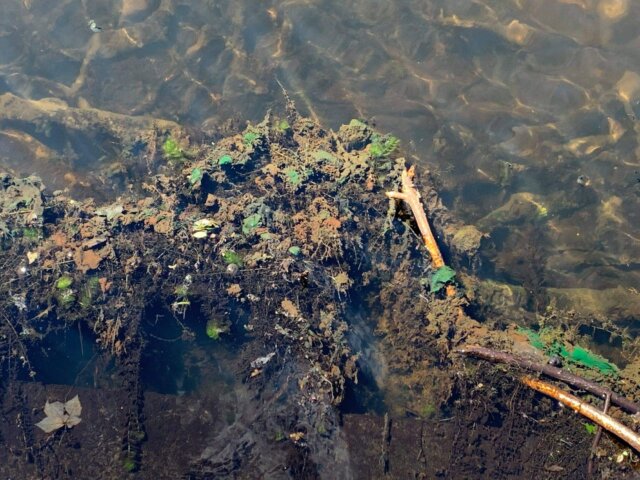As we progress through July, we’ve hit peak beach season. Since many pups love swimming, we tend to take them with us when we visit the lake or ocean. Why not let them splash and play to their heart’s content? Well, there is one pretty compelling reason to leave the dogs at home this summer: toxic lake algae.
Those who live in Maine should be particularly alert about this. Last week, the South Portland Parks and Recreation department found signs of a toxic blue-green algae bloom in Hinckley Park. They’re waiting on official confirmation, but for now they advise residents and visitors to not let their dogs near the lake. On Facebook they shared:
“Please remember, if this is cyanobacteria, it is extremely toxic to your dog. Please keep them away from the waters edge, do not allow them to drink the water and do not allow them to swim in the water.”

What Is Cyanobacteria?
Also referred to as “blue-green algae,” cyanobacteria are microscopic organisms that live primarily in fresh water and salt water. In low concentrations, the algae is harmless. It exists in all Maine lakes. However, it can sometimes produce toxins during an algal bloom, or overgrowth.
When ingested, these toxins can kill dogs and cause harm to people too according to Scott Williams, executive director of the Lake Stewards of Maine.

This bacteria can be pretty sneaky. To people, the smell of cyanobacteria ranges from absolutely nothing to sickening. The algae isn’t necessarily visible either, and could be present in water that looks clear. It lives both above and below the water’s surface.
It can also be found on lake shores, so watch to make sure your dog doesn’t sniff around there. Even licking their own wet fur or a ball that went in the water can be life-threatening.
What Happens If You Or Your Dog Encounters The Algae
Contact with blue-green algae can kill a dog in a matter of minutes, though it can also take a few days. If you suspect your dog has come into contact with the algae, take them to the vet right away. You might also want to wear gloves to carry your pup so the algae doesn’t touch your own skin. You should also immediately wash any toxins off them with clean water.
Symptoms in your dog could include:
- Vomiting
- Foaming at the mouth
- Lethargy
- Neurologic symptoms including stumbling, spastic twitching, loss of coordination, and partial paralysis
- Difficulty breathing
The best way to avoid tragedy is keeping your dog away from this water altogether! If you do see any potential toxic blooms, inform your local health department.
 Toledo, United States.
Toledo, United States.